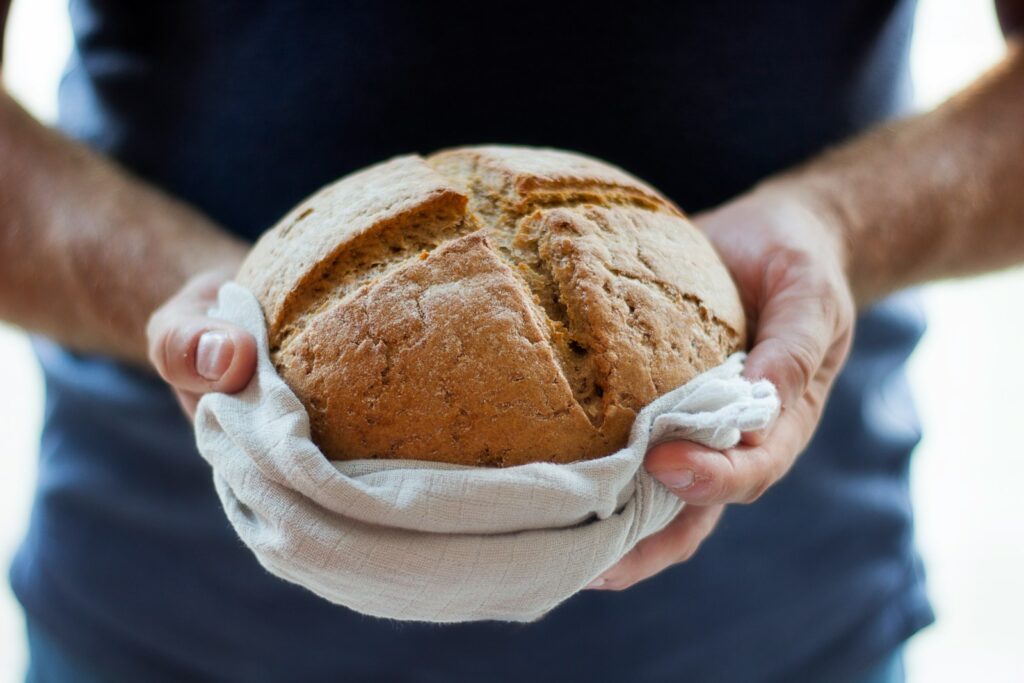If you’re a lover of sourdough bread, you know that there’s nothing quite like the tangy flavor and distinct crispy crust it carries. However, storing the bread properly to lock in this delightful taste can be tricky and demands unique requirement compared to other kinds of bread you may have encountered.
This article aims to guide you through several techniques and items you can utilize to store your precious loaf. We will delve into the use of paper bags, linen bread bag, plastic bread bags, Ziploc bags, aluminum foil, tea towel, wooden bread box and cloth bag among others.
Finding the balance with Paper Bags
Storing sourdough bread in a paper bag is an old yet effective way to preserve its quality. The porous nature of the bag allows for better air circulation which helps keep the crust crispy while preventing the bread from getting soft or stale quickly. However, remember, paper bags don’t provide complete protection against drying out.
The Linen Bread Bag Effect
When looking for a more eco-friendly and sustainable way to store your sourdough bread, a linen bread bag is an ideal choice. Similar to paper bags, they allow adequate air circulation. A particularly good aspect about these sturdy, reusable bags is they effectively protect the bread’s surface from drying out while allowing just enough airflow to maintain a crispy crust.
Plastic vs Ziploc Bags
Plastic bread bags and Ziploc bags are incredibly popular due to their wide availability and convenience. They excellently counteract moisture loss – a major advantage during particularly dry seasons or climates. They are great at preserving softness but they can make the crust of sourdough bread too soft which may not be ideal for certain people’s preferences.
Preserving Freshness with Aluminum Foil
The use of aluminum foil to store sourdough bread is another commendable method. Wrapping your loaf in aluminum foil helps seal in moisture, thus preventing the bread from drying out. On the downside, similar to plastic bags, this method can compromise on the crispiness of the crust. Therefore, it’s more suited for those who prioritize moisture over a crispy crust.
Enlisting Tea Towels and Cloth Bags
A tea towel, when combined with other methods, can do wonders in maintaining the freshness of sourdough bread. After initially storing the bread using any of the mentioned ways, wrapping it additionally in a tea towel can provide further protection against moisture loss and offer some temperature regulation. Similarly, cloth bags work excellently well, functioning much like linen bags in balancing air flow for the crust’s texture maintenance while protecting the loaf from excessive drying.
The Wooden Bread Box Charm
No list about bread storage methods would be complete without mentioning the classic wooden bread box. While seemingly traditional, there’s no denying its effectiveness in prolonging the shelf life of sourdough bread. The key is in the wood acting as insulation by keeping cool air out while allowing just enough exchange of fresh air through slight gaps in the lid to maintain the bread’s crust and freshness.
Many of these methods aim to balance between two things; restricting airflow to slow down the staling process while providing sufficient breathability to maintain crispiness. Sour and flavorful, sourdough bread deserves this delicate treatment to bring out its best qualities every time. Consequently, preference becomes a significant factor in deciding your ideal storage method – where moisture is pitted against crust texture.
Additional Tips
- Remember to store the sourdough bread cut side down after slicing.
- Do not refrigerate sourdough bread; it hastens the staling process.
- If you have large quantities, consider freezing the bread for longest shelf life.
With these methods at your disposal, you should be able to keep your sourdough loaf as delectable as when you first got your hands on it!

